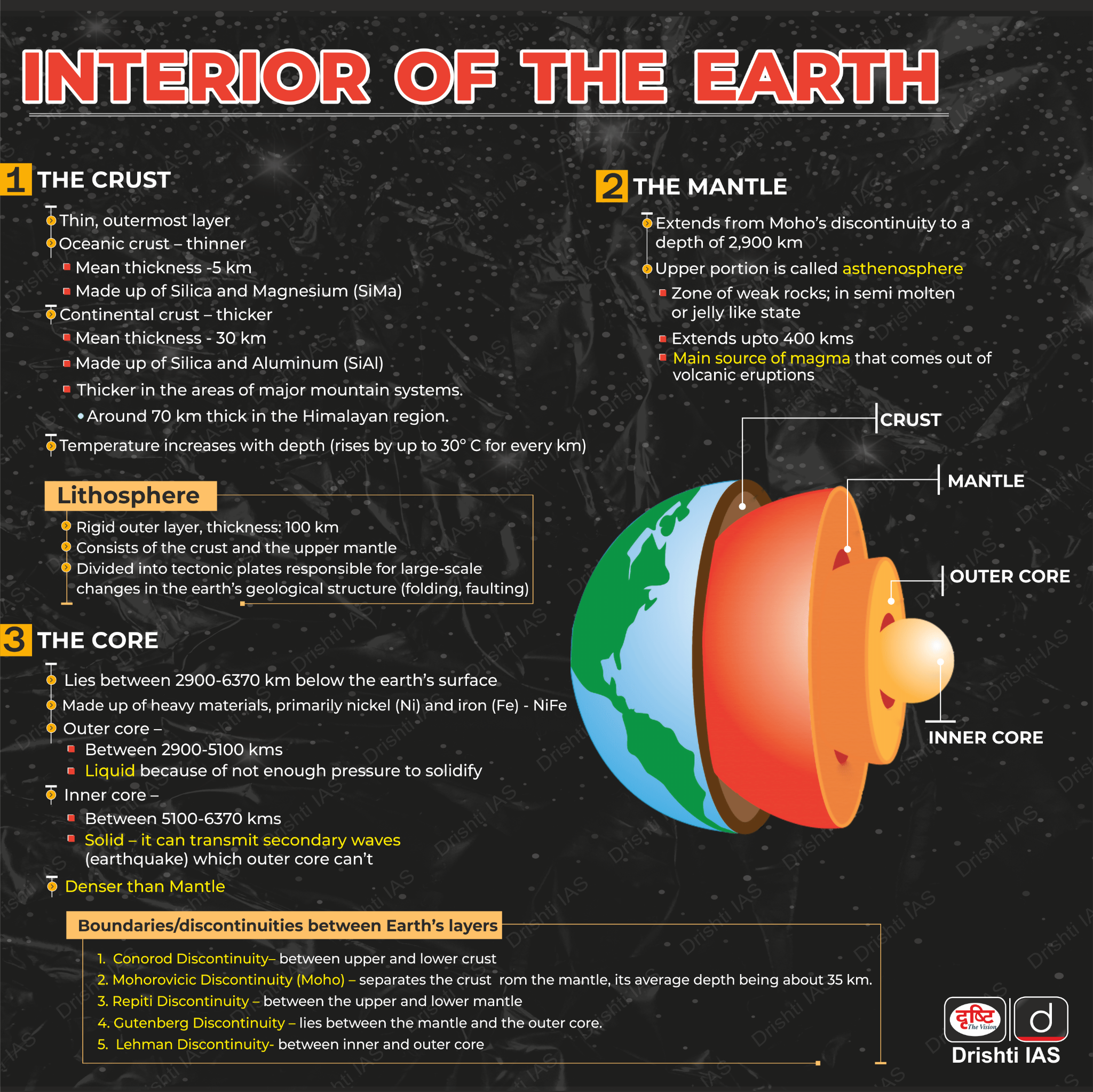Structural Changes in Earth's Inner Core | 12 Feb 2025
Why in News?
- A study published in Nature Geoscience reveals that Earth's inner core is undergoing structural changes.
What are the Key Findings of the Study?
- Methodology: Researchers analyzed seismic waves near Antarctica’s South Sandwich Islands from 1991 to 2024. Repeating earthquakes revealed subtle changes in seismic waves, offering insights into Earth’s inner structures.
- Structural Changes in Inner Core: The near surface of Earth's inner core is undergoing structural changes, challenging the earlier belief that it is rigid and stable.
- The inner core's rotation appears to be slowing down, which could subtly alter the length of a day on Earth.
- Researchers suggest viscous deformation in the inner core is caused by dynamic interactions between the turbulent, molten outer core and the solid inner core, similar to how magma flows under stress.
What are the Key Facts About Earth's Inner Core?
- Structure: The inner core is a hot, dense ball primarily made of iron and nickel. Unlike the liquid outer core, the inner core remains solid due to immense pressure from Earth's upper layers.
- Depth and Size: Located 5,150 km beneath the surface, at Earth's center. It has a radius of about 1,220 km.
- The boundary between the inner and outer core is called the Lehmann Discontinuity.
- Magnetism: The inner core influences Earth's magnetic field, while the outer core's swirling liquid iron generates it through the geodynamo effect (magnetic field generation).
- The inner core has high thermal and electrical conductivity.
- Rotation: The inner core rotates eastward slightly faster than the Earth's surface, completing an extra rotation every 1,000 years.
- Growth: The inner core grows by about 1 mm per year as the liquid outer core solidifies.
- Growth is uneven, occurring more around subduction zones and less near superplumes.
- The core will never fully solidify due to slow crystallization and continuous radioactive decay.
Earth’s Interior
- The Earth’s interior is structured in concentric layers, similar to an onion. These layers are:
- Crust (Outermost Layer): The thinnest layer, varying in thickness:
- Continental crust: ~35 km thick, composed mainly of silica (Si) and alumina (Al), referred to as "sial" for the continental crust.
- Oceanic crust: ~5 km thick, oceanic crust contains silica (Si) and magnesium (Mg), called "sima".
- Mantle (Thickest Layer): Extends up to 2900 km below the crust. Composed of silicate minerals rich in iron and magnesium.
- The upper part contains the asthenosphere, a semi-molten layer responsible for plate movements.
- Core (Innermost Layer): Extends up to 3500 km in radius. Composed of nickel (Ni) and iron (Fe), called "nife".
- Divided into Outer Core (liquid state, generates Earth's magnetic field) and Inner Core.
- Crust (Outermost Layer): The thinnest layer, varying in thickness:
UPSC Civil Services Examination, Previous Year Question (PYQ)
Prelims
Q. In the structure of planet Earth, below the mantle, the core is mainly made up of which one of the following? (2009)
(a) Aluminium
(b) Chromium
(c) Iron
(d) Silicon
Ans: (c)

